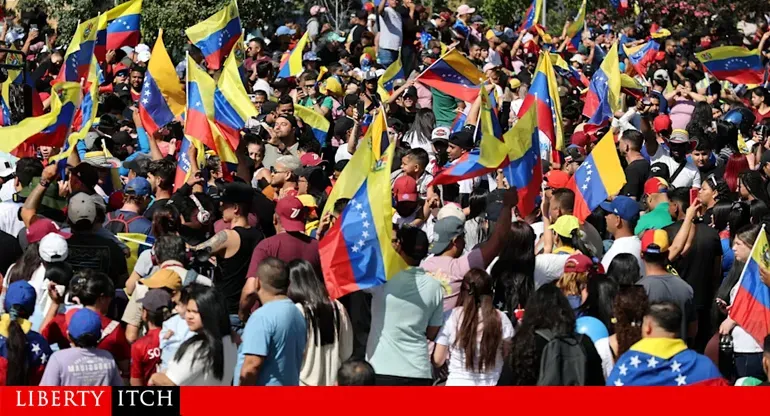Table of Contents
Ran Porat
Ran is a university lecturer and analyst on Israel and Middle Eastern Affairs, an expert on extremism in the Australian Arab/Muslim Community and on the Israeli Diaspora in Australia. He is also a research associate at the Australia/Israel & Jewish Affairs Council (AIJAC) and a research fellow at the International Institute for Counter-Terrorism at the Reichman University in Herzliya.
In the coming days, Israelis and Jewish communities across the globe will commemorate the one-year anniversary of the 7 October Hamas attack.
On that tragic Saturday, during the Jewish holiday of Simchat Torah, thousands of heavily armed Hamas terrorists breached the barrier surrounding Gaza, storming into neighbouring kibbutzim, towns, and cities in vehicles.
With candles, prayers and music, commemorations for the October 7 attack began in Israel's Tel Aviv on Sunday at a ceremony to mark the first anniversary of the Hamas onslaught at the Nova music festival.https://t.co/x8C7WV02T3
— AFP News Agency (@AFP) October 6, 2024
During the next 24 hours, these militants slaughtered men, women and children of all ages, killed concertgoers, raped women, burned houses – sometimes with people still inside – and carried out a campaign of destruction and pillage.
Hamas effectively conquered several square kilometres of Israeli territory, including some military bases. Their operatives had orders to push deeper, believing they were part of a larger plan that would ultimately lead to the destruction of the Jewish state, after other factions of Iran’s proxy network, the “axis of resistance”, joined the battle.
By the end of that day, more than 1100 Israeli residents were killed – the highest number of Jewish casualties in a single day since the Nazi Holocaust. More than 200 civilians were violently kidnapped into Gaza.
A major war soon followed. Israel invaded the Gaza Strip, where Hamas had intertwined its military infrastructure, including a vast network of tunnels, within civilian neighbourhoods and buildings such as mosques, hospitals, schools and clinics.
The fighting led to more Israeli casualties and significant Palestinian losses, with deaths – civilian and combatant – exceeding 40,000 by early October 2024, according to the Hamas-run Health Ministry in Gaza.
Thousands more were killed in Lebanon, Syria, and Yemen, and the bloodshed sadly continues. Millions of civilians in Gaza, Israel and Lebanon have been displaced.
INDEPENDENT: 365 days of horror since October 7 #TomorrowsPapersToday pic.twitter.com/ZHfrQcMr5O
— Neil Henderson (@hendopolis) October 6, 2024
That day, 7 October, was a seismic event in the history of the Middle East. A year later, what are the aftershocks of this event? What are its implications for the Palestinian issue, and for the balance of power in the region between the pro-Western bloc and the “axis of resistance”?
The Palestinians: One step forward, two steps back away from a state
One of the presumed motivations that led Hamas to initiate its 7 October attack was to prevent a US-mediated normalisation deal between Jerusalem and Riyadh. Hamas feared that official relations between Israel and Saudi Arabia – arguably the leader of the Sunni world – would signal Arab marginalisation of the Palestinian issue in favour of alignment with the strongest regional power – Israel.

This trend was already visible in the 2020 Abraham Accords, which normalised relations between Israel and two wealthy Gulf states, the UAE and Bahrain, as well as Morocco (and unstable Sudan). Israel was not required to make any substantial concessions on the Palestinian issue in exchange for these ties.
In the immediate aftermath of the 7 October attack, it seemed that Hamas had succeeded in halting any Saudi-Israeli agreement and refocusing attention on the Palestinian cause.
More and more states began recognising the State of Palestine, despite the fact that no such state formally exists.
Israel was brought before the International Court of Justice (ICJ), which urged it to take immediate action to prevent genocide against Palestinians, while Israeli settlements in the West Bank were declared illegal by the same forum.
The International Criminal Court (ICC) is currently deliberating whether to approve arrest warrants for Prime Minister Benjamin Netanyahu and other Israeli officials on alleged war crimes charges.
A wave of pro-Palestinian protests swept through city streets and university campuses around the world, including in Australia.

However, Hamas’ successes were short-lived, and its strategy shown to be short-sighted.
Firstly, because the 7 October attack gave Israel the legitimacy and momentum to drastically change its strategic approach, shifting from a policy of containment to one of militarily “quashing the enemy”. A year later, Israel has aggressively dismantled Hamas in Gaza.
The human and economic toll has been immense, but Hamas has been reduced from a major military force to a guerrilla organisation that continues to terrorise many Gazans.
Further, the wider diplomatic recognition of the State of Palestine is unlikely to be translated into the creation of such a state anytime soon. Most of the international community and Israel have drawn opposite conclusions from 7 October.
The former view the war as underscoring the urgent need for a two-state resolution as soon as possible.
"Sparks from this conflict light touchpaper in Britain too. We stand with Israel in the face of Iranian aggression but only a two-state solution can break the cycle of violence" | ✍️ @Keir_Starmer
— The Times and The Sunday Times (@thetimes) October 6, 2024
In contrast, Israelis see the events of 7 October as proof that, at least for now, a Palestinian state represents a completely unacceptable security risk, a potential hotbed for radicalisation that could lead to another similar or worse massacre.
When the Israeli PM reiterated his rejection of a two-state solution to US President Biden in a phone call at the weekend, it raised the question of how much influence the US can bring to bear on Israel in this conflict. @latingle speaks to Aaron David Miller. #abc730 pic.twitter.com/Dyz80dvpBQ
— ABC News (@abcnews) January 22, 2024
In some respects, the Hamas-ruled Gaza enclave from 2007 until last year was one model of a Palestinian state, and it birthed the 7 October attack.
There is deep mistrust toward the Palestinians, and the Palestinian Authority (PA), which pays stipends to terrorists (“pay-for-slay”), and is not viewed as a credible partner for peace. The PA is economically bankrupt and unable to govern over many parts of the West Bank, and growing numbers of its security personnel are involved in terrorism against Israel.
Iran: Losing key parts of its ‘axis of resistance’
Another significant shift following the aftermath of 7 October relates to Iran. In recent days, Israel has seized the opportunity to dramatically reshape the geopolitical landscape of the Middle East in its favour, particularly in relation to its arch enemy, the Islamic Republic of Iran.
Tehran’s initial reaction to the events of 7 October was one of great satisfaction, celebrating the humiliation of Israel by a “resistance movement”. Soon after, Iranian affiliates launched attacks on Israel from all directions: Hezbollah from Lebanon, Shi’ite militias from Iraq and Syria, and the Houthis from Yemen. Iranian funds and weapons were funnelled on a large scale through Jordan to Palestinian terror operatives in the West Bank.
However, Iran's directive to its proxies was clear – to “harass” Israeli forces with constant relatively low-intensity attacks, but not cross the threshold into all-out war with the Jewish state so a full-scale regional conflict would not be triggered.
The purpose of this directive was to preserve, rather than waste, its strategic “ring of fire” – Iran’s network of proxies surrounding Israel. This network is part of Tehran’s expansionist agenda of “exporting the revolution” by building and operating Iranian social, education and religious institutes, mostly within dysfunctional Middle Eastern countries, which spread the extremist ideologies of the founder of the Islamic Republic, Ayatollah Ruhollah Khomeini.
The defensive side of the network was designed to harass and pressure Israel, but its ultimate purpose is to deter any Israeli or US attack that might threaten the Iranian regime's survival. The network’s capabilities therefore must be preserved to fulfil that purpose.
The game-changing moment in Iran’s plans came in mid-September when Israel launched its campaign against Hezbollah in Lebanon.
After years of preparation, including covert Israeli cross-border raids by elite forces, the first public sign of Israel’s new campaign was the destruction of thousands of pagers and walkie-talkies used by Hezbollah operatives.
This was followed by a fierce bombardment campaign and a ground incursion, all aimed at eliminating Hezbollah’s top commanders, destroying much of its estimated arsenal of 150,000 missiles scattered throughout Lebanon (including in civilian homes) and preventing Hezbollah’s elite Radwan commandos from executing their plan to conquer Israel’s Galilee and thus replicate the atrocities of 7 October.
So far, this Israeli effort has been highly successful, while Iran has shown no intention to actively intervene in a way that could salvage its most “precious” proxy asset, Hezbollah.
Meanwhile, Iran twice broke its own longstanding policy of relying solely on deniable proxies by attacking Israel directly.
The first instance occurred on the night of 14 April, in response to Israel’s killing of a senior Iranian officer in Syria. The second took place on 1 October, in retaliation for a series of Israeli targeted killings, including those of Hezbollah leader Hassan Nasrallah in Beirut and Hamas’ top official, Ismail Haniyeh, killed on Iranian soil.
These attacks amounted to a major strategic misstep by Iran. In both cases, nearly all of the hundreds of incoming missiles and drones were intercepted by Israel’s air force and multi-layered defence systems – widely regarded as the best in the world.
A regional partnership led by the US, and including anti-Iran Arab countries, also participated in the interception effort. By successfully repelling the attacks, Israel reaffirmed its centrality to the West, able to utilise the most advanced US and Israeli weapons, defence systems, and intelligence to neutralise almost any threat.
This is highly relevant to the war in Ukraine, where Russia is testing the West’s military technology and resolve with the assistance of Iranian-supplied weapons.
Moreover, like Hamas, by attacking Israel directly, Iran has inadvertently granted Israel the legitimacy to retaliate directly against the regime in Tehran, potentially with US backing – a response that is currently being prepared as this article is written.
Israel: ‘Day after’ plans required
It took Israel a year, but it is now beginning to recover from the darkest moment in its history, regaining its status and prestige as a regional power. The Israeli Defence Forces (IDF) are in the midst of a challenging but thus far successful campaign to dismantle two key elements of the “ring of fire” network, Hamas and Hezbollah, delivering a significant blow to Iran’s core strategy.
Israeli decision-makers are even contemplating whether to use this moment to strike Iran’s nuclear facilities, central to its illicit atomic weapons program.
The Saudi normalisation deal is also apparently back on the table.
However, for Israel to fully capitalise on its successes, it needs to craft a vision for peace and stability in the region.
"Israel has to make a clear statement from the outset, that we are committed to a two-state solution as the solution for the Palestinian-Israeli conflict." - Ehud Olmert #abc730 pic.twitter.com/wzo7CWuu7j
— ABC News (@abcnews) November 1, 2023
A power vacuum in post-Hezbollah Lebanon or post-Hamas Gaza would lead to chaos, the regrouping of terrorist organisations, or the rise of new Iranian proxies.
A concrete “day after” plan for both arenas, backed by the international community and key Arab states, is essential for securing Israel’s recent gains and realigning the post-war power balance in the Middle East in favour of the Jewish state and the West.
Specifically, Riyadh has made it clear that a normalisation deal can move forward only if Israel takes meaningful steps in a process that could lead to an independent Palestinian state.
The problem is that Israeli Prime Minister Benjamin Netanyahu and his right-wing coalition government, which depends on two far-right parties, don’t seem inclined or able to make any such move, even symbolically.
In addition, Palestinian de-radicalisation would require a changed Palestinian leadership, as well as a culture on both sides that is open to a two-state negotiated outcome. The prospects of all these processes occurring seem slim a year from 7 October, and a genuine peace deal seems far away.
This article was first published on Monash Lens. Read the original article.







